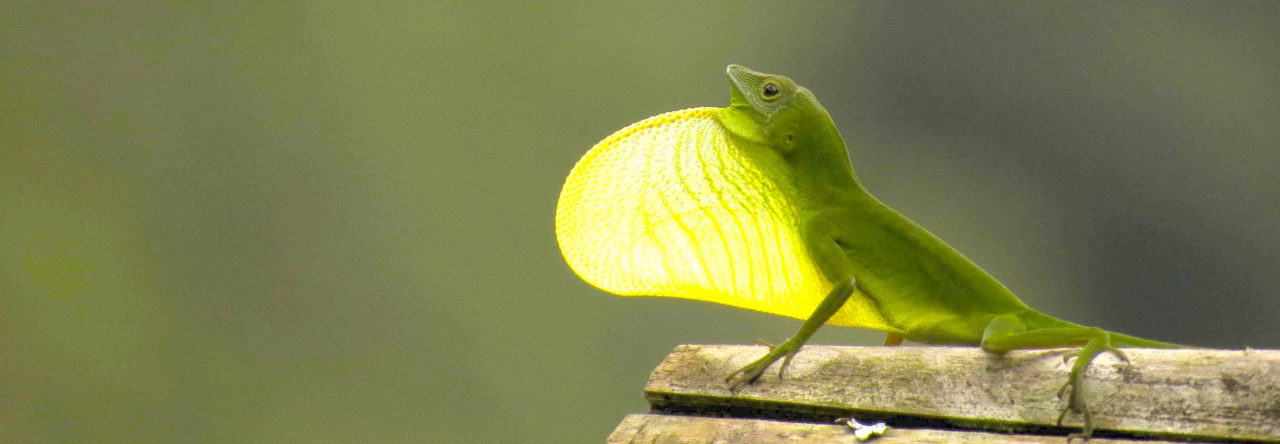
A little more than a year ago, this correspondent trekked to the eastern coast of Costa Rica to chronicle the spread of the invasive Puerto Rican anole, A. cristatellus. Introduced to the Caribbean port city of Limon many moons ago, we found that the crested anole has made its way down the coast to the vicinity of the Panamanian border, and speculated that it may also have crossed the bridge to the Land of the Canal. In addition, it has spread inland to the west, as far and as high as the town of Turrialba and, at lower elevations, to Siquirres, 60 km from Limon. However, 37 km further west, we failed to find it in Guapiles, though our visit was late in the day. Given its widespread occurrence at low-to-mid elevations, we predicted that the Puerto Ricans may some day advance far to the north and west, trampling through the Tortuguero area to Nicaragua and who knows how far westward?
Taking advantage of our herpetology class sojourn to Costa Rica, I led an intrepid expedition comprised of a freshman, a sophomore, and a graduate student to head eastward from the La Selva Biological Station to determine just how far these lizards have advanced.










